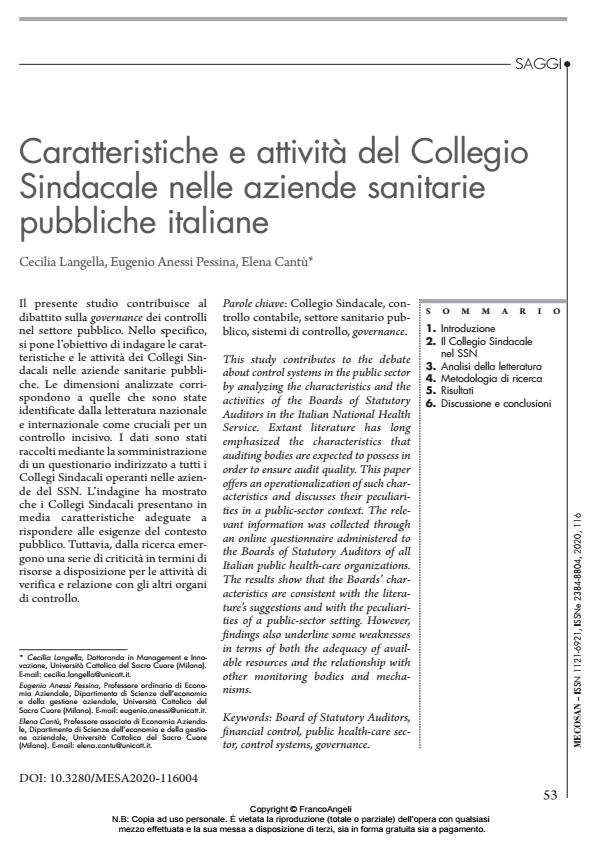Caratteristiche e attività del Collegio Sindacale nelle aziende sanitarie pubbliche italiane
Journal title MECOSAN
Author/s Cecilia Langella, Eugenio Anessi Pessina, Elena Cantù
Publishing Year 2021 Issue 2020/116
Language Italian Pages 21 P. 53-73 File size 255 KB
DOI 10.3280/MESA2020-116004
DOI is like a bar code for intellectual property: to have more infomation
click here
Below, you can see the article first page
If you want to buy this article in PDF format, you can do it, following the instructions to buy download credits

FrancoAngeli is member of Publishers International Linking Association, Inc (PILA), a not-for-profit association which run the CrossRef service enabling links to and from online scholarly content.
This study contributes to the debate about control systems in the public sector by analyzing the characteristics and the activities of the Boards of Statutory Auditors in the Italian National Health Service. Extant literature has long emphasized the characteristics that auditing bodies are expected to possess in order to ensure audit quality. This paper offers an operationalization of such characteristics and discusses their peculiarities in a public-sector context. The relevant information was collected through an online questionnaire administered to the Boards of Statutory Auditors of all Italian public health-care organizations. The results show that the Boards’ characteristics are consistent with the literature’s suggestions and with the peculiarities of a public-sector setting. However, findings also underline some weaknesses in terms of both the adequacy of available resources and the relationship with other monitoring bodies and mechanisms.
Keywords: Board of Statutory Auditors, financial control, public health-care sector, control systems, governance.
Cecilia Langella, Eugenio Anessi Pessina, Elena Cantù, Caratteristiche e attività del Collegio Sindacale nelle aziende sanitarie pubbliche italiane in "MECOSAN" 116/2020, pp 53-73, DOI: 10.3280/MESA2020-116004